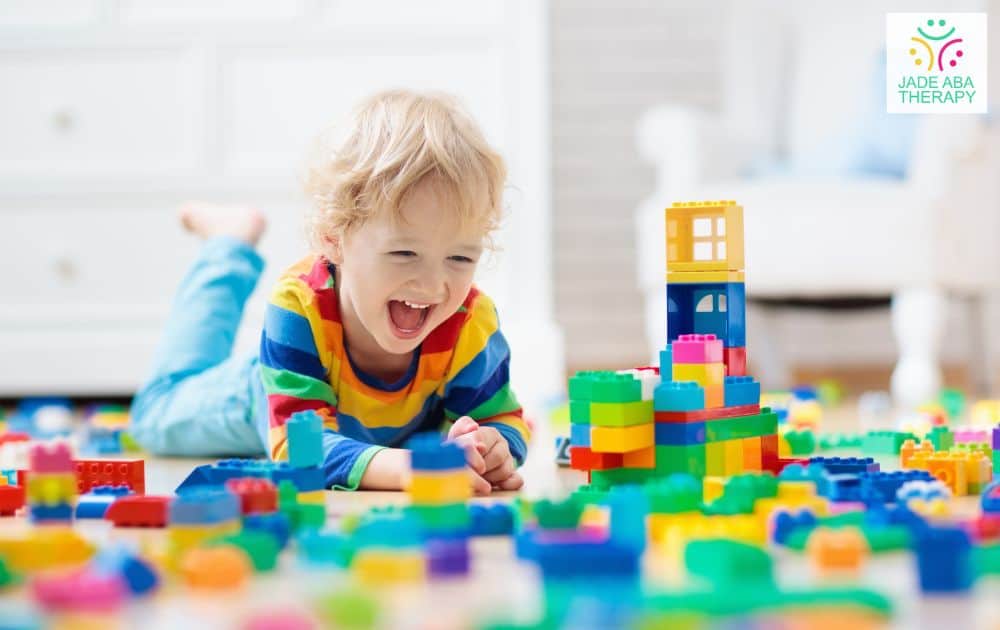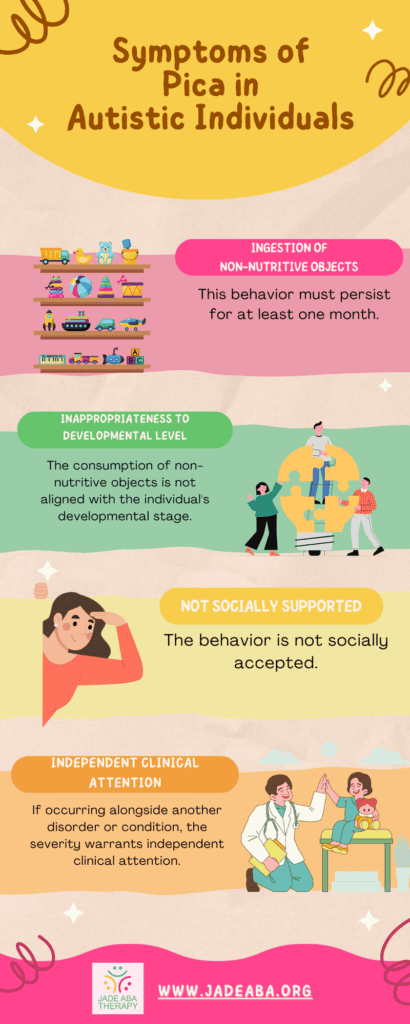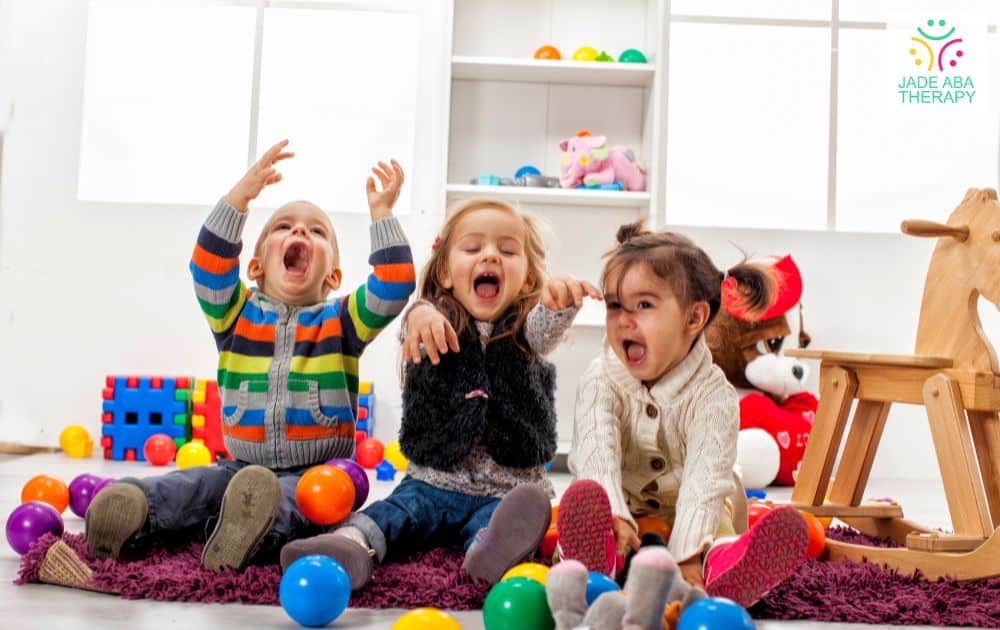If you’re a parent, you’ve undoubtedly witnessed your kids putting non-food items in their mouths. While this behavior is typical for toddlers, if it persists past a certain developmental stage, it is typically indicative of pica, an eating disorder. Regrettably, pica is a prevalent problem among children on the autism spectrum, and managing it can present significant difficulties for caregivers.

Learning about pica in autism and some management strategies can help you avoid any potential accidents in the future. We’re here to help you with that!
What is Pica in Autism?
One of the main characteristics of pica is an insatiable desire for inedible materials such as paint, hair, dirt, starch, and more. While the specific items may differ among affected individuals, most people with pica will still consume typical food items. In summary, pica is an obsessive craving for objects that are not food, and it can be extremely harmful to an individual and even fatal.
Under the American Psychiatric Association’s diagnostic criteria, a person has pica when they:
- consume non-food, non-nutritional materials for more than a month
- consume non-food at an inappropriate developmental stage
- consume non-food against all cultural norms
Not everyone with autism spectrum disorder has pica. It has also been observed in otherwise neurotypical pregnant women, those with developmental disabilities, and patients with disorders like obsessive-compulsive disorder. However, a recent AAP study shows that children with autism are much more likely to experience pica.
Approximately 28.1% of those with autism and intellectual disabilities also have pica symptoms. On the other hand, only 3.5% of children in the general child population have pica. While the precise causes of pica in autism are still unknown, scientists have developed a number of theories to address this problem.
Some speculate that sensory-seeking, in which people with ASD spectrum disorders ingest objects to experiment with various textures and tastes, maybe the underlying cause of this condition. However, some argue that pica may just be a coping strategy used by autistic kids to control their demanding sensory experiences.

Symptoms of Pica
Receiving a diagnosis of pica can be pivotal in initiating effective management strategies, potentially averting harm later on. Health professionals equipped to diagnose pica encompass pediatricians, gastroenterologists, psychiatrists, and clinical psychologists.
According to the Diagnostic Criteria for Pica outlined in DSM-5, pica is characterized by:
- Consistent ingestion of non-nutritive objects: This behavior must persist for at least one month.
- Inappropriateness to developmental level: The consumption of non-nutritive objects is not aligned with the individual’s developmental stage.
- Not socially supported: The behavior is not socially accepted.
- Independent clinical attention: If occurring alongside another disorder or condition, the severity warrants independent clinical attention.
A thorough assessment of an individual’s pica is essential, albeit a potentially lengthy and intricate process. Assessment methods may involve questionnaires and/or observation of the frequency, nature, and triggers of pica episodes.
What Causes Pica in Autistic Children?
Pica may have a variety of causes. First, make an appointment with a physician to rule out any nutritional deficiencies, as some patients experience pica due to a desire for iron or other minerals. Some autistic children might need more practice because they can’t tell the difference between food and non-food items.
Another possible cause of the autistic child’s chewing behavior could be dental pressure or pain, which would lead them to chew objects to release the pressure. However, sensory stimulation may be the most frequent cause of pica in autism cases. Some children find that eating something satisfies a sensory need and feels good in their mouths.
Managing and Treating Pica in Autism
Naturally, the cause of your autistic child’s pica will determine the course of treatment you take. It might be sufficient to alter your child’s diet and/or add vitamins or supplements if there is a nutritional deficit.
No matter what may have caused your child’s pica, you should always let their medical professionals know. It will be necessary to keep an eye out for issues related to pica, like blockages and lead poisoning.
Make sure that all caregivers, teachers, therapists, and other team members are aware of your child’s pica. They ought to be aware of the behavior and to keep the child’s favorite things out of the way when they exhibit it.
Therapy for Pica
“Differential reinforcement of functional communication” was used in one study to reroute a person’s pica behavior. The child was trained to wait for temptations by being rewarded with clean food and receiving consistent praise when they made vocal requests rather than directly picking. Other research investigated techniques such as DRI and DRA.
While DRI promoted actions that are incompatible with pica, like using tools or trading cigarettes for food, DRA promoted chewing gum as a substitute for pica. Every child with autism spectrum disorder will react most favorably to a distinct approach. Experts in the field can assist you in finding the best resources and treatments.
Managing Pica at Home
You can take the following steps, in addition to your therapy program, to safeguard your child’s health until their pica symptoms is under your control:
- If your child has autism, find out what items they like.
- Invest in child-proof boxes, drawers, and cabinets.
- Always clean the floor and edges to prevent little things from being left lying around.
- Look for things to do with your ASD child to keep them from staring at pictures.
- Think about healthier options, such as chewing gum, sensory chew toys, or snacks.

You Are Not Alone
Given the likelihood of health issues, pica is a major concern for all parents. Families of children with autism spectrum disorders face particular challenges because pica is common in these individuals. Treating this condition, however, can benefit from the introduction of early behavioral intervention. Pica is just one of the many challenges that parents of autistic children face together. You are never alone in this!
Sources:
https://www.autismspeaks.org/expert-opinion/pica-autism
https://www.autismparentingmagazine.com/pica-and-autism/
https://adult-autism.health.harvard.edu/resources/digestive-issues-pica